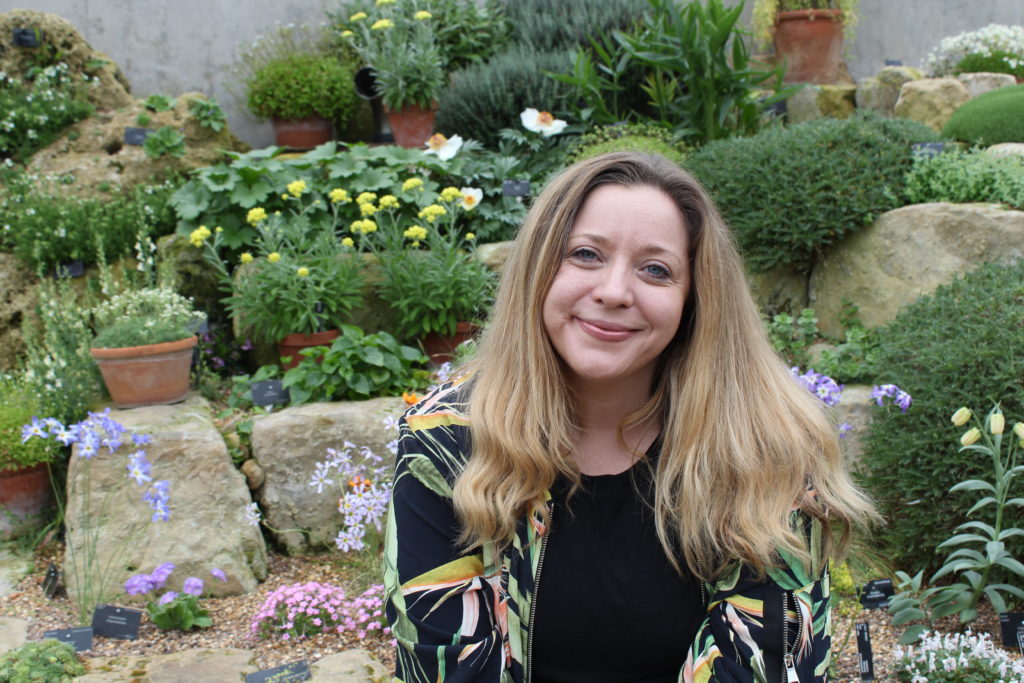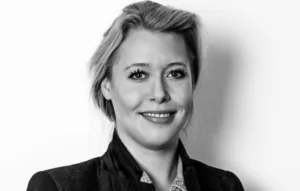Amy Kean, NDA’s monthly columnist, is brand and innovation director, &us and author of The Little Girl Who Gave Zero Fucks.,
Innovation is not a process, it’s an attitude.
Cheesiest statement ever, right? You weren’t ready for it. You probably didn’t even have time to make peace with the clickbait headline. I’ll completely understand if your eyes rolled and stomach turned.
Please don’t blame my employer (innovations consultancy &us) for the statement above. They’d never say anything so cheesy. This article is all me.
Of course, I’d like INNOVATION IS NOT A PROCESS, IT’S AN ATTITUDE to become a mantra, repeated around the world. I’d love to see it printed on t-shirts. You know those little signs people used to have in offices (remember offices?) – you don’t have to be mad to work here but it helps?
I want that. I want INNOVATION IS NOT A PROCESS, IT’S AN ATTITUDE scrawled all over walls of co-working spaces up and down London.
(If it’s not already.)
But seriously! I mean it! Innovation. Change. Is an attitude.
I’ve just read This Shit Will Never Sell by serial FMCG innovator David Gluckman, and the tale of how he invented Baileys is iconic. In 1973, he and his posh partner Hugh Reade Seymour-Davies were given a brief from an Irish drinks company to invent something new. The brief was: doesn’t matter what drink it is, just make it alcoholic.
(A demand we can all relate to, in lockdown.)
It took Gluckman and Hugh Reade Seymour-Davies 30 seconds one morning to come up with what was at first just a nameless brown liquid, whacking together two exports of exceptional quality they knew Ireland was famous for and proud of: whiskey and cream/butter. How would it taste, they wondered?
Exhilarated by their eureka, they ran to a shop in Soho, bought a few different ingredients, stirred them in a glass and after a few attempts, hey presto: they’d invented your sister’s favourite Christmas drink.
And since its modest beginnings in November 1974 (it took a while to win the public over) Baileys now sells 120 million bottles a year. The whole process from idea to beverage took 45 minutes. They didn’t even have a target audience.
Not every new product enters the world this way. Baileys may have been a fluke. But it was innovative. It was innovative because Gluckman and Hugh Reade Seymour-Davies felt safe with each other. They were open-minded. They experimented, fast. They were prepared to back something a little… weird.
They tested it with focus groups, which gave negative feedback (“it looks like a medicine”) and yet they persisted. They relied on their gut and ran with it. (Although, any sensible gut would tell you to avoid excessive consumption of creamy alcoholic drinks.)
This is why INNOVATION IS NOT A PROCESS, IT’S AN ATTITUDE. Innovation is a vibe. A positive one. You can have all the big ideas, new technology and fancy charts you like, but it’s people and environments that make positive change happen.
Everyone has a different definition of innovation. Mine is, quite simply: positive change that people value. And within a business context, ‘people’ are either your customers or your employees. Depending on who you are and what you do, people could also be the wider society.
And everyone wants a transformation, don’t they? I recently read that only 12% succeed. My educated guess is that 88% failed because a) people weren’t ready b) the people leading the transformation were either scary or unlikeable c) it was a glory change, rather than a necessary one and d) they relied upon an old, clinical, meaningless framework that doesn’t take into account the brilliance and unpredictability of human beings.
Frameworks are the business of big consultancies, who create work for themselves and over-intellectualise their outputs. Frameworks are the tool of the unimaginative. Yes, structure and excellent visualisation can help you understand a problem and help you plan, but it won’t inspire your people. To facilitate a positive change that people value, you need to value people enough to let them change.
Ok ok ok ok ok. I get it. I’m starting to sound like The Riddler. So let’s get practical. There’s a few reasons why I shun frameworks in favour of free-styling.
- Coca Cola’s 70/20/10 is flawed for everyone apart from Coca-Cola. You know how it works: with 70% of your budget you do what you always did, with 20% you do what you did but in new ways, with 10% you experiment.This approach to innovation (which is similar to a 1980s Mckinsey model) has been adopted a lot over the last few years. It’s risk-averse for organisations with scale, yes, but essentially it allows marketers to play it safe, and get away with a few dabbles in new tech. Structuring your approach to change in this way is the least imaginative way to do it. It’s the innovation framework for people who don’t want to innovate.
- Maturity models are… immature. The consultancy world is filled with maturity models, which are often used to up-sell the different services they offer. “Oh my God! The maturity model says you’re ready for… ARTIFICIAL INTELLIGENCE! Let us build you a machine immediately!”
Beware the maturity model, for it mistakenly assumes that immaturity and naivety and youth are bad. As the chart below shows… the more new, punchy and disruptive brands enter a market (in this case, FMCG) the shorter the lifespan of a ‘mature’ organisation becomes.

- Frameworks are mostly focused on success. Everyone talks about failing, but very few organisations make it ok to fail, even now. A true innovator knows how to experiment for insights, as well as business outcomes.
At &us we ran a wonderful, refreshing project with Sue Ryder. The client asked us to investigate whether they should install digital kiosks in flagship national stores, to digitise the customer experience. We investigated, we discovered, we sprinted, and told them… no. Don’t do it. (Even though we could have delivered the whole project for a decent sum). Our conclusion was it wouldn’t add enough to the user journey, and would cost a lot for little return. The client was grateful.
- A matrix won’t win you awards. Often the word ‘innovation’ is just shorthand for ‘new stuff’. This is wrong, and damages the integrity of the field. New stuff doesn’t necessarily create value for people, and as we all know, is often executed to win awards. If that’s your aim: be honest! Don’t laden your approach with academia as a means of justification. It’s ok to want some industry acknowledgement for your creativity every once in a while.
I wish our industry functioned with a different dynamic, where instead of widespread ego-fuelled complexity, we were all confident in our own intelligence and ability to not over-compensate with frameworks upon frameworks upon frameworks. Where big cowboys didn’t feel the need to oversell and decrease trust across the board. Where people didn’t get defensive when change is proposed because “we’ve always done it this way.”
Where we prioritise positive attitude over process, because positive attitude makes shit happen. And most importantly: one where drinking Baileys for breakfast is the norm. It works for an industry and guess what… it’d work for society, too. I don’t have a framework for that change, but I reckon it’s possible.
At &us we’ve released an exercise book called Faster Moving Consumer Goods which shows how how people and superpowers (not frameworks upon frameworks upon frameworks) can inspire innovation in your business. It also includes stories about Charles Dickens and Disneyland. Grab it it here.









